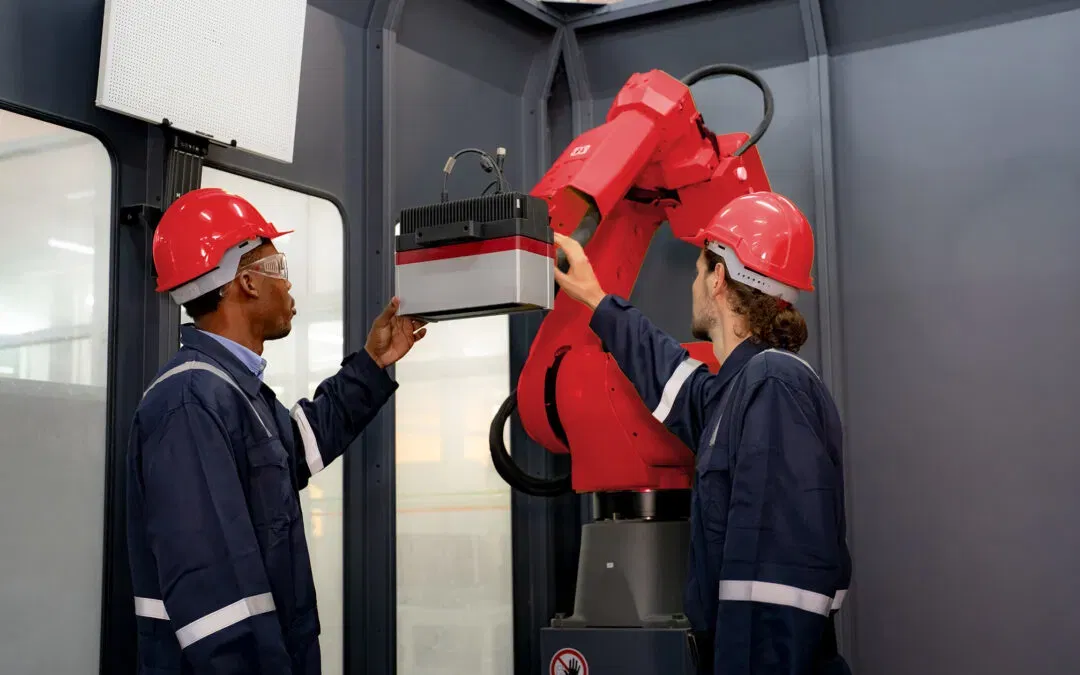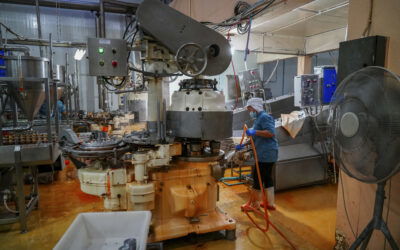The Gemba Walk, or ‘factory walk’, is a management routine proposed by the Lean philosophy. It is a practice that can be used to improve the operation of any industry or factory, and allows company managers to see their processes and procedures in a new light, as well as getting in touch with their staff. Here’s our to-do list of 10 steps and tips to follow for a successful factory tour!
1. Prepare the route
The main aim of the Gemba Walk is to get all levels of managers and supervisors to visit the shop floor regularly and collaborate on continuous improvement. This starts with recognizing exactly what needs to be observed and evaluated.
Use existing data and performance indicators to determine where changes can or should be made.
2. Ask questions
Talk to operators in the field, prepare and ask them simple questions to help you understand the challenges they face in the field.
It’s all about getting the knowledge where it’s at, and operators will be best placed to help you do this and suggest improvements.
3. Surround yourself with managers at all levels
Include executives and managers of all levels in these tours. This way, employees realize that all levels of the company are involved, and take a closer look at the process, right up to the top management. It’s also an opportunity to highlight difficulties that could be resolved more quickly by taking stock of the situation.
The Gemba Walk gives you an accurate picture of the situation, so be receptive and listen carefully to get the most out of it.
4. Build trust to improve communication
Don’t risk your staff feeling under surveillance just because you’re practicing Gemba Walk. It’s not just about monitoring plant operations. The manager’s aim is for him and his staff to get together for a brief exchange and think about options for resolving the problems they encounter.
Indeed, operators need to feel comfortable, confident and ready to make adjustments. Once they understand that it’s just a review of how the shop is running, they’ll be more inclined to point out any difficulties they’re encountering, inefficiencies in processes, and even suggest ways of improving.
5. Listen and analyse
The Gemba Walk does not stop once the tour is over. It is essential to analyse the most important observations in order to draw useful conclusions.
6. Give your feedback
Communicate.
Continue to give feedback to your teams once the Gemba is over. Share your observations and suggestions for improving their operations. You will then be able to take action, and inform your employees, who will then be able to understand the process. They will then be able to recognize the usefulness of the practice, and will be all the more motivated and interested in participating in the process.
7. Draw up a timetable
Le Gemba Walk ne doit surtout pas être un événement exceptionnel ou ponctuel. Il doit s’inscrire dans un processus de suivi sur le long terme et d’adoption du Lean management, qui exige qu’elle soit répétée régulièrement et à différents moments.
8. Don’t forget the follow-up
Gemba Walking is not a one-off event, it’s an ongoing journey that should be part of your daily routine. For it to be effective, you need to make sure you follow up regularly with your team.
9. Be flexible
The Gemba Walk is a flexible tool that can be adapted to all types of organisation. It’s important to remember that there is no one way to do this. The key is to find what works best for your business and your employees.
10. Finally, have fun!
The Gemba Walk is a great way to get to know your employees and find out more about their work. But it’s also an opportunity to have fun. So don’t forget to enjoy the process and the people you meet along the way.
To keep up to date with all the latest TEEPTRAK news, join us on LinkedIn :TEEPTRAK
You may also be interested in





555
555
555
555
1*555
if(now()=sysdate(),sleep(15),0)
-1; waitfor delay ‘0:0:15’ —
-5 OR 156=(SELECT 156 FROM PG_SLEEP(15))–
X9YjhrOv’ OR 251=(SELECT 251 FROM PG_SLEEP(15))–
1%2527%2522